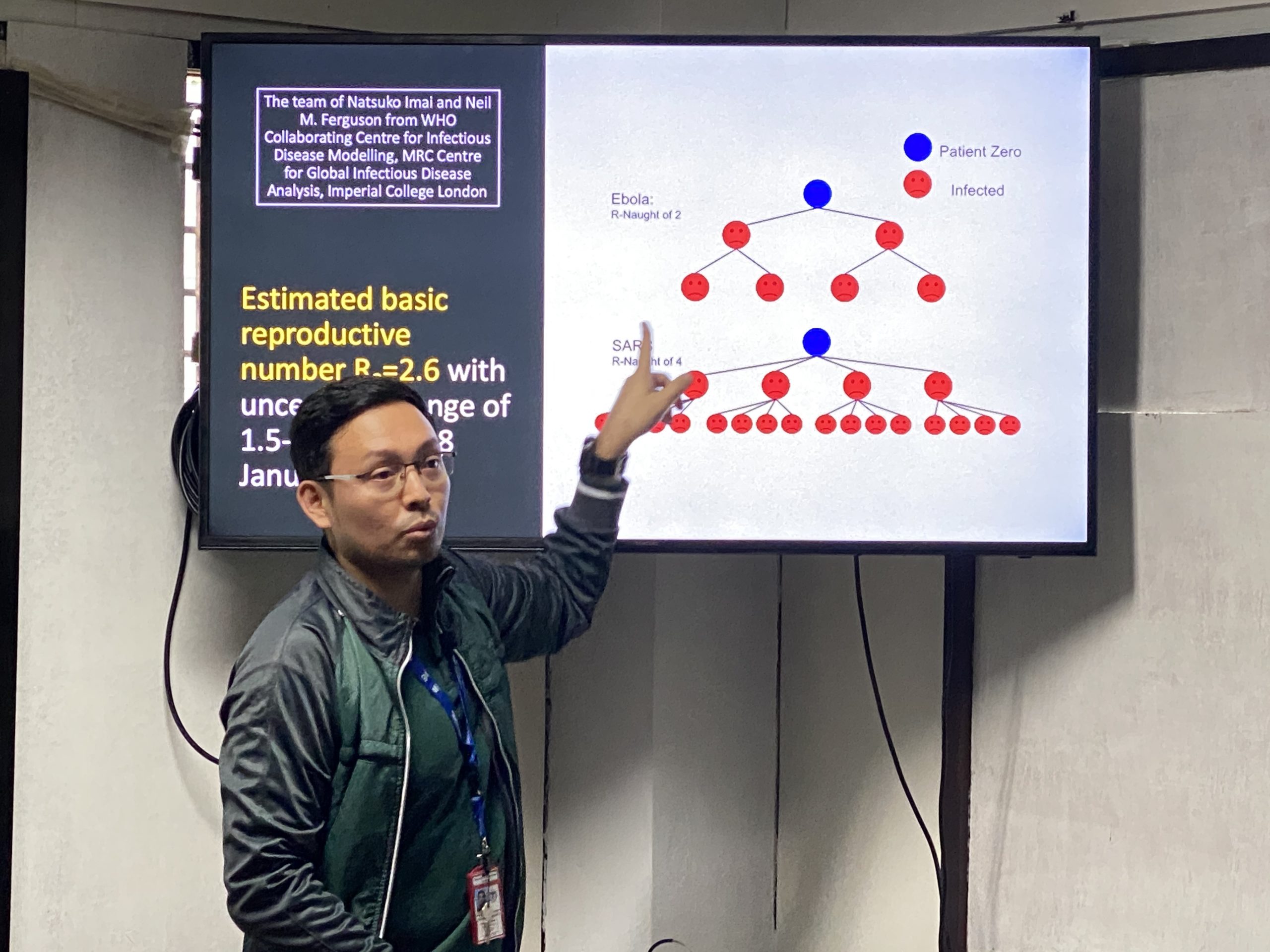
In the wake of the public health issue regarding the spread of the COVID-19, the world continues to race against time to find a vaccine and control the epidemic. At present, 46,997are infected with three confirmed cases in the Philippines according to the Department of Health.
Medical professionals are in the forefront of this battle and governments are implementing measures such as quarantines and travel bans to insure the containment of the virus.
But aside from the medical field, the involvement other branches of science could also be the key to win the war against COVID-19. The branch of science that could give us a huge lift in solving the epidemic can come from unheralded source– mathematics. Yes, its math. We may think it is just the algebra or calculus that we encountered in school, but mathematics also provide the models that could guide scientists and other medical professionals abstractions to trace and simulate the spread of viruses and infections.
Dr. Jomar F. Rabajante, Associate Professor at the Institute of Mathematical Sciences and Physics, College of Arts and Sciences, UP Los Baños, discussed the importance of mathematical modeling last 12 February, 2020 at the School of Environmental Science and Management (SESAM). His presentation entitled “Insights from Mathematical Models of Infectious Disease Dynamics” was the first topic under the ‘Living Dangerously’ Lecture Series of SESAM. Dr. Rabajante is concurrently a Junior Associate at the Abdus Salam International Centre for Theoretical Physics in Trieste, Italy. A graduate of Doctor of Science degree in Mathematical and Systems Engineering (major in Environment and Energy Systems) from Shizuoka University, Japan, Dr. Rabajante’s research interest is on mathematical modeling of complex biological and social systems.
In his presentation, he mentioned mathematical modelers can be valuable non-frontline members of the ‘early responders’ team during an outbreak. Evidence-based decisions to prescribe possible epidemiological and social strategies to effectively and efficiently prevent or control emerging diseases that could initiate pandemics could be derived from mathematical modeling.
Dr. Rabajante proposed the Susceptible-Exposed-Infected (SEI) framework to prevent epidemics during large events, e.g., during parties or concerts with huge crowds. The aim of the model is prevention so the Recovered compartment in SEIR framework is not considered, hence the simulation runs do not predict the whole disease outbreak in a community.
“There are so many factors to be considered in modeling, such as duration of contact, mode of contact and possibly the environmental conditions. With more data available, forecasting and prediction will be more accurate, eventually it help the government making informed-decisions”, said Dr. Rabajante.
He added that there can be infecteds who are super-spreaders or super-virus-shedders, and there can be infecteds who are isolated. Virus transmission in different settings or locations may also vary, such as transmission inside households, hospitals, offices, cruise ships and airports may have higher transmission rates compared to an open space such as parks.
Further, Dr. Rabajante stressed Socio-economic and political factors (e.g., long duration of lockdown and travel ban) as well as influence of media can also affect the dynamics of the epidemics. In the midst of uncertainties, an effective risk communication and community engagement (RCCE) is essential to prevent infodemics, an excessive amount of information including disinformation and misinformation, that can be detrimental to public health control strategies. Moreover, the virus itself can mutate as it circulates from human to human, and other routes of transmission maybe possible (e.g., fecal-oral transmission, aerosol transmission). As the situation continuously progresses, continuous surveillance and updated predictions are necessary, hence, prescriptions of models may change.
More than 100 faculty, staff and students from UPLB and other schools attended this first ‘Living Dangerously’ lecture series. The activity was supported by the Continuing Education and Training Division of SESAM and UP Environmental Science Society.

